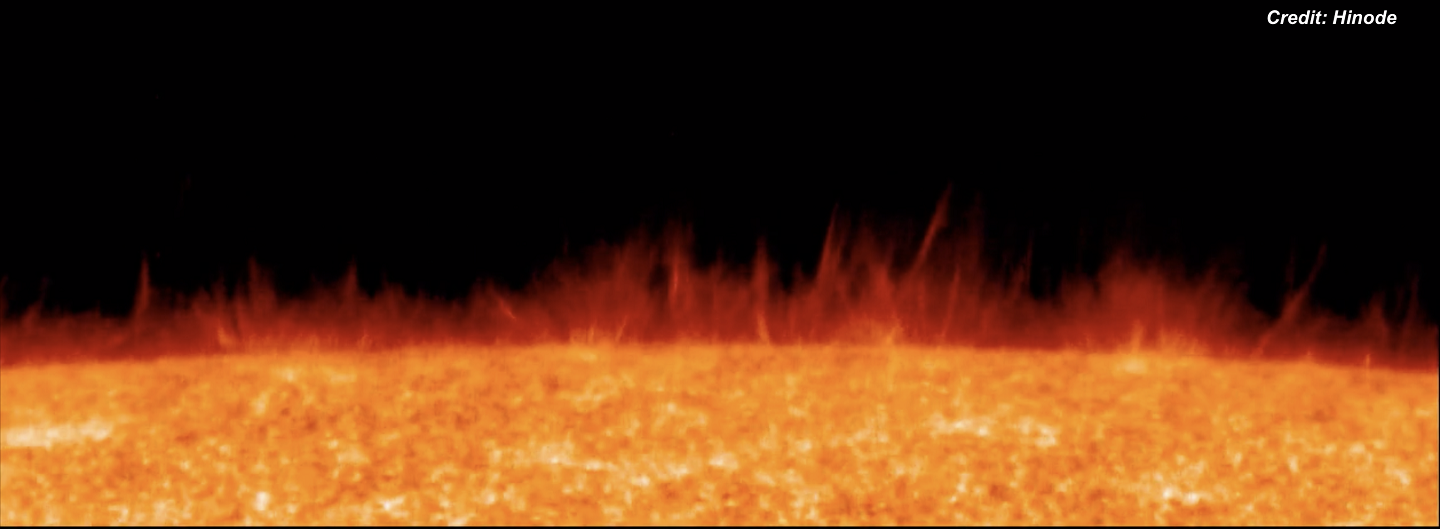Alligator’s mating call helps solve one of astrophysics’ oldest problems

Spicules on the surface of the Sun (credit: Hinode)
10 March 2022
The centuries-old mystery of why jets of plasma up to more than 10,000 kilometres high are shot from the solar surface of the Sun has been solved in a paper for Nature Physics co-written by an Aberystwyth University researcher. Its answer can be explained with the help of looking at how male alligators attract mates by bellowing bass frequencies.
These jets, or spicules, were first discovered in the 19th century by the Italian astronomer Angelo Secchi. They look like a forest of hairs dancing on the sun when looked through a telescope but are actually narrow but long jets of plasma shot up at tremendous speed. Up to three million of them can form at any one time on the surface of the sun.
The physical effect of jets being shot up in this way is known as the Faraday excitation, named after the English physicist who discovered it in the early 18th century.
An example of this phenomenon that happens on Earth is the mating displays of male alligators. They submerge their necks and bellow at bass frequencies, causing jets of water to dance above the surface of the water.
Spicules’ presence may solve a long-standing mystery in solar physics: why the solar atmosphere is hundreds of times hotter than the surface of the sun – a million degrees Kelvin compared to 6,000 degrees Kelvin – even though it is a considerable distance from the main energy source.
In a paper published by Nature Physics, a team of researchers, including Dr Marianna Korsós from Aberystwyth University’s Department of Physics, analysed data taken from the IRIS spacecraft using advanced processing techniques and found that spicules are launched because of convection.
In the Sun’s interior, parcels of hot gas rise to the surface, cool off and then descend. This convection is like how boiling water acts and produces sound waves that spread throughout the Sun, causing it to vibrate.
This action is what ‘kicks’ the spicules into the solar atmosphere. These jets can stretch between 4,000 and 12,000 kilometres in height and between 300 and 1,100 kilometres in width.
Dr Korsós said: “The results shed light on one of solar physics’ most vexing problems. For decades, physicists have been trying to work out what is responsible for heating the solar atmosphere to such extreme temperatures.
“Spicules, which are among the most visually quirky of the Sun’s characteristics, could be one of the elements responsible for that heating process. Because of our research we now understand what causes them and why so many exist on the Sun’s surface.
“However, what fascinates solar physicists is that there is still a lot about spicules that we don’t know, such as how much energy they generate. This research gives us a strong foundation on which we can further explore this strange facet of the Sun.”
Dr Korsós’s research was funded by the Science and Technology Facilities Council.



